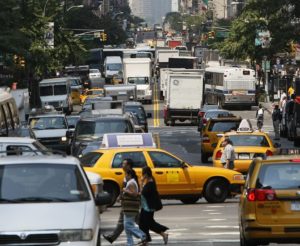 The results of a recent study makes sense - that different microbes are found in city and town apartments and homes versus rural homes and jungle huts. And of course one would expect these different exposures to have an effect on our health. Guess where one gets more fresh air and sunlight, and where one has more chemical exposures?
The results of a recent study makes sense - that different microbes are found in city and town apartments and homes versus rural homes and jungle huts. And of course one would expect these different exposures to have an effect on our health. Guess where one gets more fresh air and sunlight, and where one has more chemical exposures?
Inside modern city and town buildings is lots of exposure to all sorts of plastics, human made chemicals, cleaners (and disinfectants), pesticides, medications, lack of fresh air, and along with lack of sunlight - all sorts of fungi. On the other hand, in rural areas there is fresher air, more sunlight, and more natural materials. [Remember: it's plastics and modern chemical compounds that outgas into the air and are a cause of air pollution. And yes, get into our bodies and affect our health negatively.]
The study was conducted in Peru and Brazil by several big names in the microbiome field, including Martin Blaser, Rob Knight, and Maria Dominguez-Bello. As the researchers point out, we have replaced a natural environment with a synthetic environment. Bottom line: get out into nature as much as possible, even if it's just walks. Try to use natural materials in your home (e.g., wood and not just plastic furniture), try to use "natural" products, and fewer chemicals routinely (pesticides, disinfectants, etc)
From Futurity: More Fungi Live In Urban Homes Than In Jungle Huts
In their work, researchers found city homes to be rife with industrial chemicals, cleaning agents, and fungi that love warm, dark surfaces, while jungle huts had fresher air, more sunlight, and natural materials with which humans evolved.
Urbanization is associated with a reduction in infectious diseases, but also with a worldwide increase in obesity, asthma, allergies, autism, and other disorders, as well as a massive loss of diversity in the human microbiome, the beneficial germs living on and in our bodies.
The researchers compared microscopic materials in homes and people’s bodies, spanning the spectrum of urbanization in the Amazon basin. The locations included a remote Peruvian jungle village of thatched huts with no walls; a Peruvian rural town with wooden houses without indoor plumbing; a Peruvian city of 400,000 residents and more modern amenities; and the metropolis of Manaus, Brazil, which has a population of two million.
“Urbanization represents a profound shift in human behavior. Modern living literally walls us off from the natural environment and shuts us in with industrial compounds, higher carbon dioxide levels, and skin-loving fungi,” says senior author Maria Gloria Dominguez-Bello, a professor in the biochemistry and microbiology department and the anthropology department at Rutgers University–New Brunswick. “This study sheds light on how human-created environments affect our health and how we can think about improving them.”
The researchers found that the diversity of chemicals clinging to indoor surfaces increases dramatically with urbanization. Molecules derived from medications and cleaning agents were part of the interior environment of homes in the metropolis and city but not in the rural or jungle homes.
Although the urban dwellers reported cleaning more frequently, surfaces in their homes had a greater diversity of fungal species associated with human skin. This may be because the fungi have become resistant to cleaning products, the study says. It may also reflect the urban homes’ warmer temperatures, reduced air exchange, lower levels of natural light, and higher loads of human skin flakes.
Samples from people in the different environments also showed a greater diversity of foot fungus on the urban dwellers. Also, in the rural and jungle homes, the researchers found a greater variety of bacteria and fungi that live outside, and fewer species known for colonizing the human body.
“We are just now starting to quantify the effect of cutting ourselves off from the natural environment with which we as humans co-evolved and of replacing it with a synthetic environment,” says co-corresponding author Rob Knight, a professor and director of the Center for Microbiome Innovation at the University of California, San Diego.
Dominguez-Bello says exposure to outdoor germs and natural materials may benefit the human microbiome. Her prior research found that people in urbanized societies have lost a substantial part of their microbiota diversity compared with hunter-gatherers in isolated Amazonian villages.
